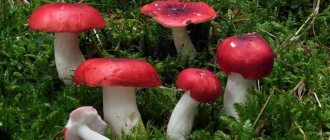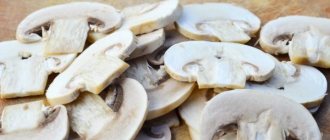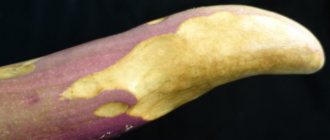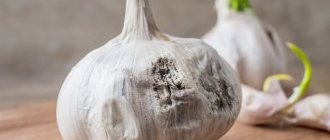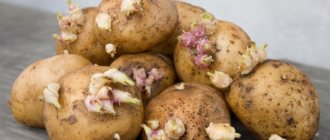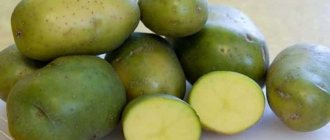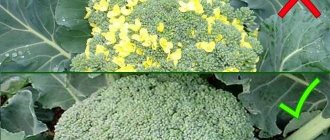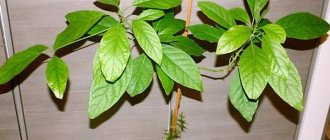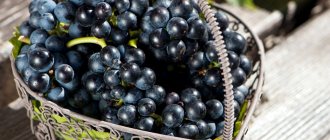Potential health hazards of fruits
Experts give the following useful recommendations for growing blueberries:
- To plant eggplants, you need to choose a place that is sufficiently lit and protected from gusts of wind.
- Plantings should not be thickened, and sometimes it makes sense to remove leaves that shade flowers and fruits.
- Crop rotation should be observed. You should not plant this plant crop in an area where the predecessors were tobacco, tomatoes, potatoes and eggplants themselves.
- To increase the yield of these vegetables, the soil must be well fertilized before planting. Organic fertilizers - mullein, bird droppings or humus - are best suited for this purpose. If the soil is acidic, then to reduce the acidity you need to use dolomite flour at the rate of 2 tbsp. spoons per 1 m².
- It is recommended to throw a handful of wood ash into each planting hole or pour it with a manganese solution at the rate of 1.5 liters per plant.
- Seedlings are planted when the soil warms up to 15°C and the air temperature reaches 18°C.
- You should water the roots with warm water at least once every 7 days. During fruiting, watering should be increased to 2 times every 7 days, and in hot weather every 2-3 days. It is necessary to regularly loosen the soil and remove weeds after watering or rain.
- To obtain a high yield, fertilizing should be applied at least 3-4 times during the entire growing season. The first application of fertilizers is carried out 2-3 weeks after planting. For this purpose, complex fertilizers such as “Rastvorin” and “Kemira” are used. During fruit ripening, it is better to use nitrogen-containing fertilizers (moderately) and phosphates. During the fruiting period, it is useful to sprinkle the beds with wood ash.
- To improve flowering and ovary formation, bushes can be treated with boric acid at the rate of 2 g per 10 liter bucket of warm water.
Greening of the fruits may indicate that the eggplants are outgrowing and the presence of an increased amount of the toxic alkaloid solanine. In this case, the fruits must be properly processed to reduce their levels, otherwise their consumption may cause poisoning.
Usually we don’t think much when using eggplants when preparing dishes, whether they will bring harm or benefit to our body. Many people like the “little blue ones” fried as a cold appetizer or a hot dish; others prefer to bake eggplants in the oven, stew them, or cook eggplant caviar.
If you previously had a cool attitude towards the “little blue ones”, we recommend that you reconsider your attitude and include eggplant in your diet - its medicinal properties will help you significantly improve your health and quickly cope with existing diseases.
Here is a list of health problems for which eggplants will be especially beneficial:
- anemia,
- atherosclerosis,
- diabetes,
- gout,
- cardiac ischemia,
- liver and kidney diseases,
- problems with blood vessels,
- gastrointestinal diseases,
- constipation,
- metabolic disease,
- insomnia,
- constant stress.
The benefits of eggplants for the blood are great: they lower the level of sugar and bad cholesterol in the blood
Even one tablespoon of stewed eggplant per day will benefit your kidneys and liver, improve digestion and have a mild diuretic effect.
The benefits of eggplants for the blood are great: they lower the level of sugar and bad cholesterol in the blood, increase hemoglobin, promote the production of red blood cells, thereby improving the composition of the blood, in addition, they keep blood pressure at the desired level.
In the East, where eggplants themselves come from, they are considered a vegetable of longevity. In addition to its healing effects on the body, this vegetable is valued by Eastern women for its ability to have a rejuvenating effect, improve skin color, smooth out wrinkles and give skin elasticity.
Overripe eggplants are dangerous to eat.
Eggplants have contraindications for consumption in cases of gastritis, indigestion and stomach ulcers. And those who suffer from diabetes should not get too carried away with eggplants due to the fact that they contain very few carbohydrates - such a diet can lead to hypoglycemia.
Eggplant dishes are a characteristic feature of Balkan, Arab, Caucasian and Indian cuisine. Thanks to their delicious taste and the ability to grow vegetables yourself in a greenhouse, they are no less popular in our country. What are the benefits of eating eggplants, and what harm they can cause to the human body, find out from this article.
It’s not for nothing that eggplant is called the vegetable of longevity; the benefits of consuming it are invaluable. It is recommended to include eggplants in the diet of elderly people, children over 3 years old, pregnant women, and people suffering from obesity.
Eating eggplant can be dangerous only due to the high concentration of the alkaloid substance corned beef in overripe fruits. It is corned beef that gives the vegetable its characteristic bitter taste. Poisoning with it is fraught with diarrhea, nausea and vomiting, intestinal colic, convulsions, dizziness, and loss of consciousness.
Contraindications to the use of this vegetable are due to the presence of:
- ailments of the gastrointestinal tract;
- acute forms of urolithiasis;
- individual intolerance to the product.
During frying, eggplants absorb a lot of oil, which makes dishes greasy and can cause pancreatic dysfunction and digestive problems. To reduce the absorption of oil by eggplants, they should be soaked in cold water for several minutes before cooking or boiled.
Attention! Low calorie content - only 28 kcal - makes eggplant desirable for use in dietary nutrition. To preserve all the beneficial properties of eggplant dishes, it is better to cook them without adding oil, for example, bake or grill.
Eggplants are a must-have for a healthy diet. Its use will allow you to maintain health, strengthen the body's protective functions, and also enjoy the taste.
Towards mid-summer, eggplants appear on vegetable shelves - beautiful berries that are actively used in cooking and winter preservation. Man first grew this crop as a decorative one and only then paid attention to its taste and benefits. But if consumed incorrectly, eggplant can cause harm to the body.
The bitterness in the skin of this vegetable crop is provided by solanine. The substance is a natural poison. Poisoning with it is accompanied by dizziness, convulsions, pain and intestinal upset. However, there is very little poison in the peel. For example, there is more of it in the green parts of potato peels. The poison will only manifest itself if you eat too many fruits.
The blueberry pulp also contains harmful substances that stimulate an increase in the amount of oxalic acid in the body. It is the cause of kidney stones. Therefore, doctors do not advise people with urolithiasis to eat eggplant. Other contraindications to the use of blueberries:
- For allergies. Observe the body's reaction if a person eats eggplant for the first time. This recommendation is especially relevant in relation to children.
- Children under 3 years old. Their intestines and immunity are not yet ready to absorb coarse fiber and process solanine.
- For chronic and acute forms of gastrointestinal inflammation. Fiber stimulates the tract to work actively, and this is harmful when the mucous membrane is damaged.
- For pancreatic ailments or various intestinal disorders.
- For gout.
- For diabetes mellitus.
- With a lack of iron in the body (anemia).
There are much more benefits in vegetables than harm. Delicious fruits have a positive effect on metabolism and immunity, the functioning of the nervous and circulatory systems. Also, blue ones have a positive effect on:
- vision;
- skin condition, rejuvenating it;
- hair and nail health;
- protein digestibility;
- blood vessels and liver health;
- the work of the intestines, cleansing it of toxins;
- joint health and bone strength.
Attention! Eggplant is also considered a food that resists the formation of cancer cells. The pulp contains more than a dozen phenolic acids that are responsible for this. The darker the fruit, the more there are.
To prevent eggplants from turning green from overripeness, harvest them at the moment of technical ripeness (occurs a little earlier than biological ripeness). It is better to pick young, slightly unripe fruits than to be late. Such vegetables will have a thin skin and a small, unformed seed part.
Solanine accumulates not only in overripe fruits. Ripe eggplants can turn green if there is insufficient watering in dry weather. To prevent this, ensure timely watering. And even at the planting stage, choose well-lit places for eggplants.
Preventive measures against greening of eggplants
To prevent eggplants from turning green from overripeness, harvest them at the moment of technical ripeness (occurs a little earlier than biological ripeness). It is better to pick young, slightly unripe fruits than to be late. Such vegetables will have a thin skin and a small, unformed seed part.
Attention! To determine technical ripeness, press on the eggplant without removing it from the bush. A small dent will form, which will disappear in a couple of seconds. If no trace remains when pressed, then the crop can be harvested. And, if the dent is deep and does not disappear, then you have an overripe eggplant, and it is better to leave it for seeds.
Solanine accumulates not only in overripe fruits. Ripe eggplants can turn green if there is insufficient watering in dry weather. To prevent this, ensure timely watering. And even at the planting stage, choose well-lit places for eggplants.
Why do eggplants turn green instead of blue?
Eggplants accumulate solanine, a toxic alkaloid. It not only gives vegetables a bitter taste, but also a green color. Young fruits contain an acceptable amount of solanine, and it does not make itself felt. But in overripe specimens the level of this toxic substance is off the charts. At the same time, not only the color of the eggplant peel changes from blue to green (sometimes to yellow or even brown), but also the color of the pulp and seeds. They darken and become brownish in color.
In most cases, the reason for greening of eggplants lies precisely in untimely harvesting. But it also happens that the “little blue” ones acquire a greenish tint due to an excess of nitrogen or lack of light. This leads to the fact that their development is inhibited, and the fruits begin to lighten.
So, we found out that eggplants turn green when they are overripe or, conversely, have problems with development. But these are not all the reasons. There are varieties whose peel remains green when ripe or becomes white-green. These cultures came to us from Asia and North America and are gaining increasing popularity in our country.
These varieties include:
- Emerald F1;
- Alenka;
- Green;
- Green F1;
- Yoga;
- Louisiana;
- Thai green;
- Green Galaxy F1.
These varieties have light-colored peels: from white to light green, salad green. There is a color with pigmentation or stripes. Their shape is varied and even unusual for eggplants: spherical, curved cylindrical, elongated cylindrical, slightly flattened, oval. The color of the pulp ranges from creamy white to light green.
In all these varieties, solanine is either completely absent or its content is minimal (0.0025% per 100 g of dry matter). And the taste of these varieties is different in that it completely lacks the bitterness characteristic of dark blue eggplants. Among them there are sweetish fruits that can be eaten raw.
Eggplants, like all nightshade crops, are capable of accumulating the toxic alkaloid solanine. It is this alkaloid that gives them a bitter taste. In young fruits its content is tolerable and quite acceptable, but when overripe they begin to become very bitter and change color to green, yellow or brown. The pulp inside quickly turns brown, and the seeds become ripe and also darken.
It should be taken into account that there are varieties of eggplants that have greenish tones in the skin when ripe.
They are popular in Asia, but we also have, for example, the Emerald variety, which has a green or whitish skin and creamy white flesh that is not bitter and has a mushroom flavor. And sometimes eggplants do not turn blue due to the fact that their development is inhibited by an excess of nitrogen or the fruits become lightened and do not turn blue due to a lack of light.
Did you know? Increased doses of solanine may be found in potatoes that have sprouted or turned green in the sun. It is most concentrated in the sprouts and skin. The harmful alkaloid is also present in unripe tomatoes, but when they grow and begin to change color, they can be used for preparations.
Harm and contraindications
Eggplant undoubtedly has many beneficial properties, but it also has certain contraindications.
First of all, we are talking about overripe fruits with a high content of a toxic substance - solanine. Poisoning with it has the following symptoms:
- vomit;
- convulsions;
- diarrhea.
If you or your loved ones experience these symptoms after eating eggplant, seek medical help immediately.
In addition, purple fruits should not be eaten if you have the following diseases:
- diabetes;
- diseases of the gastrointestinal tract during exacerbations.
Vitamin composition of eggplants
So, are eggplants healthy, and what are their healing properties? Can these harmless-looking purple vegetables cause harm to our body? Let's take a closer look at what eggplants are - their properties and composition, as well as possible contraindications for consumption.
The beneficial properties of eggplant will come in handy during dietary nutrition.
Like other vegetables from the garden, eggplants are not deprived of vitamins. They contain B vitamins, which have a beneficial effect on the nervous system and relieve insomnia. The amount of vitamin C in one eggplant is enough to prevent flu and colds. In addition, “little blue” contains vitamin PP, which makes it easier for smokers to quit cigarettes, as well as numerous micro- and macroelements: potassium, phosphorus, iron, calcium, magnesium, copper, manganese.
Thanks to folic acid, eggplants are recommended to be included in the diet of pregnant women. In addition, these not very popular vegetables contain a lot of iron, which is necessary during pregnancy and anemia. And due to manganese and zinc, adding eggplants to food can improve your condition after a stroke.
Separately, it is worth noting the substance that is found in the eggplant skin - nazunin. This element of plant origin protects nerve cells and has powerful antioxidant properties, so eggplants can be used as an excellent preventative against cancer and for additional nutrition of the brain.
The beneficial properties of eggplant will come in handy during dietary nutrition, because one hundred grams of this vegetable contains only 23 kilocalories! Of course, fried eggplants are not taken into account, but boiled or baked, you can safely eat them without fear for your figure. Moreover, eggplants help the digestion process thanks to fiber, and also effectively break down fat, helping to lower cholesterol levels in the body. In return, the body receives healthy unsaturated fatty acids.
Eggplants help the digestion process thanks to their fiber and also effectively break down fat.
Eggplant, or in common parlance blueberry, refers to nightshade berries. In appearance, it may have a deep purple, less often pale blue or even white peel. Unlike the pulp, it gives a bitter taste, but this is precisely the quality that many value in eggplant. The fruit is rich in useful substances:
- a set of B vitamins;
- ascorbic acid;
- cellulose;
- vitamins PP, A, E, K;
- pectin;
- in macro quantities - potassium, sodium, magnesium, as well as chlorine, calcium, phosphorus, manganese and zinc;
- in microdoses - copper, fluorine, also iron, etc.
Attention! In terms of molybdenum content, eggplant occupies a leading place among fruit and vegetable crops.
Eggplant fruits are distinguished not only by the color of their peel, but also by their shape. The blue ones are pear-shaped, oval, or combine different rounded shapes. As a rule, the weight of the fetus is approximately half a kilo or a little more.
The main feature of eggplant is that it must be picked when it is not ripe. Of course, you won't get poisoned by eating a fully ripe blueberry. But its flesh will be rough and will lose its piquant taste. The peel of overripe fruits should generally be cut off first. This garden berry is usually harvested from late summer to October.
Striped hybrids
Eggplants with striped skin are grown indoors and outdoors. The varieties are resistant to diseases and produce good yields - up to 2 kg per bush. Basically they have ovoid elongated fruits without bitterness and excellent taste. Many hybrids are grown in the north of the country, as they easily tolerate temperature changes.
Varieties:
- “Matrosik” is a productive variety of 8 kg per square plot. The fruits are pear-shaped, up to 16 cm long, weighing 300-400 g. The bush needs tying up, its height is 80 cm.
- “Striped flight” is a high hybrid with a yield of up to 4.5 kg per 1 sq. m. Eggplant weighs 100-200 grams and is grown in greenhouses.
- "Overseas minke whale" has high yields - up to 9 kg per 1 sq. m. Large fruits from 500 gr. up to 900 gr. mass. The height of the bush is up to 1.2 m, it needs a garter. The color of the blue ones is purple with white stripes.
- “Polundra” has a pear shape, the weight of vegetables is 200-250 g. Vegetation period 115 days, yield 5 kg.
- "Adamant" has a round fruit shape. Powerful stems up to 60 cm tall. Vegetables ripen quickly - 70-78 days from germination. One copy weighs 200-300 grams.
- “Graffiti” is a hybrid of purple color with white stripes, the weight of one vegetable is 450 g.
- “Sailor” – growing season is 110 days. The fruits are thin and long, each weighing up to 350 grams. Productivity is about 3.5 kg per meter.
What to do and is it possible to eat such eggplants?
With varieties with greenish skin everything is clear. They can be safely eaten, even without first soaking them in salt water. But is it possible to eat eggplants with green skin that is unusual for the varieties?
In such eggplants the amount of solanine is off the charts. They are easy to poison. Symptoms of solanine poisoning include:
- dizziness;
- disorientation;
- migraine;
- nausea;
- vomit;
- stomach pain;
- diarrhea;
- elevated temperature.
If these symptoms appear, rinse your stomach and take sorbents (Enterosgel or white coal).
With the systematic use of small doses of solanine, a rash and mouth ulcers appear. This also leads to insomnia.
Treatment
Although it is not advisable to eat green overripe fruits, it is possible. However, they must be processed before use.
To remove the harmful alkaloid solanine and bitterness from a vegetable, do the following:
- Cut the eggplants (slices, circles).
- Sprinkle them with salt and leave for 40-60 minutes. Wait for them to release juice and drain it.
- Rinse the vegetable pieces well with running water. Remove large seeds. Place the eggplants in a colander and squeeze out.
- Blanch the eggplant pieces in boiling salted water for 5-7 minutes.
- Remove the green skin (this is easy to do after blanching).
Processed vegetables are ready for further cooking.
Seed material
Despite the fact that after these manipulations you can eat overripe eggplants, we do not recommend doing this. It is recommended to leave overripe fruits for seeds. For this:
- Select the largest fruits of the correct shape.
- Wait until the peels begin to dry out and only then pick them.
- Place the collected fruits in a dark place for a couple of weeks so that the seeds in them ripen.
- Collect seed material.
Severely overgrown green fruits can be left for seeds. Of these, it is best to choose the largest and most beautiful specimens for seed. You need to wait until the peel on the selected fruits begins to dry, pick them and place them in a dark place. After 1-2 weeks, the seeds will finally ripen and can be collected.
You cannot eat green, overgrown fruits unless you first remove the harmful alkaloid, but it is quite possible to remove it.
In case of solanine poisoning, nausea, vomiting, stomach pain, migraine, fever, diarrhea, and disorientation are observed. Then it is necessary to rinse the stomach and take sorbents (white coal, Enterasgel).
Important! The skin of green fruits must be cut off.
The following manipulations significantly reduce the concentration of solanine:
- Eggplants are cut (in cubes, circles, bars) and sprinkled with salt. Leave for 30–60 minutes so that they release the juice. Then drain the juice, rinse the pieces well with water several times, washing out large seeds, place in a colander and squeeze.
- The pieces are soaked in salted water (1 tablespoon of salt per 1 liter of water) for 30 minutes and then squeezed out.
- The fruits are blanched for 5 minutes. at a gentle boil. After this, not only does the bitterness go away, but the skin also comes off easily.
- If the seeds are small and the eggplants are bitter, then just sprinkle them with salt for 30 minutes and then squeeze them out.
Eggplants in purple outfit
Traditionally, in Russian gardens, purple-colored eggplants lead in popularity, and the palm almost throughout the country belongs to two varieties of eggplant.
This is the Black Beauty variety, which attracts the attention of gardeners not only for its unpretentiousness and the ability to grow both in film greenhouses and in open ground, but also for its decent yield and quality of fruit. Dense brown-purple eggplants weighing 200–350 grams do not have a bitter taste, are well stored and are not susceptible to common diseases of this crop.
Second in the garden popularity ranking is the Almaz eggplant variety, distinguished by its 200-gram fruits of deep purple color. The shape of the fruit is oblong, smooth, the pulp has a pleasant taste without any signs of bitterness.
In addition to these well-known varieties, other varieties are worthy of gardeners’ attention:
- producing a lot of small, oblong fruits, weighing up to 150 grams, the Purple Miracle variety;
- eggplant variety Banana with elongated fruits that can be stored for a long time without loss of quality;
- large-fruited Black Beauty variety with fruits up to 900 grams, bright black and purple color.
Adherents of the traditional pear-shaped form will like the productive Albatross variety, which forms compact bushes from which large, up to 450 grams in weight, blue-violet fruits with dense greenish flesh are harvested.
Round eggplants, which are gaining popularity, are convenient for stuffing, canning and stewing, so varieties and hybrids that produce fruits of this shape are becoming increasingly in demand.
An example of a plant of this type is the Black Moon variety of domestic selection, which produces almost ribbed spherical fruits of a dark purple color with a glossy surface and light green flesh without traces of bitterness. Eggplants weighing from 200 to 350 grams can be harvested within 110–115 days after planting, and the ovary is formed even at low temperatures, and the plant stably bears fruit for a long time.
The high-yielding early hybrid Bourgeois also produces round eggplants with a glossy black-purple surface and almost white tender flesh. The weight of the fruit reaches 400–600 grams.
For cultivation in film and winter greenhouses, you can choose the City F1 eggplant of medium ripening, characterized by high stable yield, excellent taste and transportability of the fruit. The plant is powerful, reaching a height of more than 1.8 meters, and bears large cylindrical fruits weighing up to 0.5 kg.
The eggplant variety Dirigible is in no way inferior in yield, whose fruits weighing up to 120 grams can be harvested 125–135 days after emergence. Due to the dense crown and abundance of foliage, the yield may fall, so plants of this type of eggplant require thinning and removal of excess shoots and leaves.
Eggplant poisoning: symptoms, first aid
From the middle of summer, eggplants appear on the shelves, the beneficial properties of which can be discussed endlessly. Unfortunately, few lovers of blue ones (as eggplants are affectionately called in the south of Russia and Ukraine) know whether it is possible to get poisoned by eggplants, which sometimes leads to disastrous consequences.
And those who know the answer to the question are often too zealous with precautions, turning a healthy berry into a tasty, but useless brew. So what is the secret of eggplants and how to properly avoid poisoning with them?
How to choose and store correctly
In order to choose the right eggplants when purchasing, just follow simple recommendations:
- take the fruit young and fresh, not green or overripe;
- the peel should be dense, dark, shiny, without external damage or dents;
- The berry should not have an unpleasant odor.
It is better to store them in the refrigerator, in the fruit and vegetable compartment, where they can stay fresh for 7-10 days. You can keep them at room temperature for no more than a couple of days, then the fruits will begin to deteriorate.
Some housewives freeze raw eggplants for the winter: to do this, just cut the vegetable into slices, wash in cold water, then dry, put in a special plastic bag and put in the freezer.
I still advise you to eat eggplants while they are fresh, since most of the beneficial properties will be lost when frozen.
You can read more about how best to store eggplants in a separate article on our website.
Eastern guest from the west
Years have passed, eggplant caviar has ceased to be an overseas delicacy, but to this day few people know that this plant has a perfect defense mechanism, which is susceptible to pests and diseases. Housewives get rid of the characteristic bitterness, without even suspecting that it is caused by the presence of the neurotoxic poison solanine, which is too tough for even such a hardy pest as the Colorado potato beetle.
But don’t panic ahead of time and urgently get rid of all your existing stocks of such useful berries. After reading the following information, you will be convinced that, most likely, even without knowing about the toxin, you have already gotten rid of it. So, good news:
- solanine accumulates as the fruit ripens, that is, only ripe berries are harmful to health;
- the toxic substance gives the fruit a characteristic bitter taste, the absence of which indicates safety of consumption;
- it is easy to get rid of solanine by soaking in water;
- the poison is present in the peel, and only a small part of it is contained in the pulp.
To be fair, I would also like to note that among the possible causes of eggplant poisoning, solanine is far from occupying a leading position. If distributed by frequency, the list of causes of product poisoning will look like this:
- Nitrate poisoning.
- Poisoning from stale food.
- Incorrect preparation.
- Solanine poisoning.
Nitrates are used to obtain an earlier and more abundant harvest. If the amount of fertilizer applied does not exceed the norms, then the fruits will be safe. But in pursuit of profit, unscrupulous producers violate regulations, as a result of which eggplants become a cause of poisoning. Once in the body, nitrates disrupt the circulation of oxygen in the blood, thereby disrupting the functioning of all vital organs. Symptoms of nitrate poisoning are as follows:
- nausea;
- vomit;
- stomach ache;
- blue discoloration of nails, lips and mucous membranes;
- diarrhea, sometimes with blood;
- pain in the liver area;
- yellowing of the whites of the eyes.
If signs indicating nitrate poisoning are detected, you should immediately seek help from a medical facility. Without taking proper measures, poisoning can progress to a more dangerous form and cause disturbances in the functioning of the nervous system, having the following symptoms:
- headache, mainly in the back of the head;
- dizziness;
- apathy or hyperactivity;
- impaired coordination of movements;
- convulsions;
- loss of consciousness.
Poisoning from stale food is quite common, despite the fact that the media repeatedly talks about the dangers of such food. In such a situation, it is customary to say “eggplant poisoning,” but the cause of the disease is harmful microorganisms that have proliferated in the stale product.
- headache;
- nausea and vomiting;
- general weakness;
- temperature increase;
- pain in the stomach and intestinal spasms;
- diarrhea.
Many people love to eat fried eggplant. Yes, it's very tasty. But the benefits from such a dish are minimal, because the blue ones absorb the oil used for frying very well. If it is fresh, then the resulting product is simply a high-calorie product, devoid of many beneficial properties. But even in this version, the dish can harm the gastrointestinal tract, causing indigestion, which is well known to many. The following symptoms indicate it:
- heaviness and pain in the stomach;
- nausea and vomiting;
- general weakness;
- intestinal spasm;
- diarrhea.
As a rule, the last symptoms appear after the first three have subsided. Or they may not occur at all if you empty your stomach when you feel the urge to vomit.
Unripe eggplants are safe to eat. But overripe fruits can cause solanine poisoning if cooked without prior preparation and/or eaten too much. Signs of solanine poisoning include the following symptoms:
- nausea and vomiting;
- diarrhea;
- stomach ache;
- headache;
- dilated pupils;
- disorientation;
- temperature increase.
Particularly serious cases may be accompanied by convulsions and loss of consciousness, even coma.
Even knowing the answer to the question of whether it is possible to be seriously poisoned by eggplants and taking precautions, sometimes it is not possible to prevent poisoning. In this case, it is very important to quickly get rid of the source of toxins in your body by inducing vomiting. After emptying the stomach, drink several glasses of water and repeat the procedure.
In order for all the benefits of eggplants to be revealed without the risk of poisoning, it is necessary to choose unripe fruits that are distinguished by their elasticity and smooth, shiny skin. If the berry is soft or has been damaged and rotted at the damage site, it is better to discard it immediately.
Eat only fresh food and mercilessly discard canned food that shows the slightest sign of spoilage. Remember that botulinum poisoning is one of the most dangerous diseases that can be fatal. And try to minimize frying the eggplants. If the temptation is too great, then place the fried eggplants on paper towels, which will absorb excess vegetable oil.
Varieties of purple blue ones
Dark varieties contain a substance called solanine, which imparts bitterness to vegetables. But this does not spoil their taste after cooking. Early hybrids are grown in the northern regions of the country; they manage to ripen in 3 months of summer. Late species are planted in the south of the country; they are better stored and transported.
Early varieties of eggplant with a growing season from 80 to 100 days:
- Purple miracle;
- Diamond;
- Nutcracker;
- Robin Hood;
- Valentina;
- Long purple;
- Cavalier;
- Benezia;
- Naughty;
- Topaz.
- Banana;
- Monty;
- Hippopotamus.
Mid-season varieties, growing season 100-130 days:
- Station wagon;
- Alekseevsky;
- Karataya;
- bottlenose dolphin;
- Roma;
- Odysseus;
- Bagheera;
- Kolobok.
Tips and tricks
- Absolutely all diseased plants must be removed from the beds and burned.
- A prerequisite for proper cultivation is loosening the soil and rare watering in the morning.
- After harvesting vegetables, all plants must be destroyed, and the greenhouse soil must be treated with bleach.
- Do not neglect preventive measures, which include regular inspections of plants for damage by fungi such as sclerocinia or fusarium.
Prevention of poisoning
Of course, even knowing about the danger of poisoning, it is impossible to eliminate the risk of intoxication with 100% probability. However, by following a set of rules for selecting eggplants, in most cases this danger can be avoided:
- The fruit should be slightly unripe, with smooth, elastic and shiny skin. If the eggplant is soft or slippery, or the skin appears damaged, indented or shows signs of decay, then it should be discarded immediately.
- You should also pay attention to the color. Neither the fruit nor the stalk should be brown, this is a sign of staleness of the product.
- Good quality fruits always look simpler than they really are. Therefore, when choosing eggplants, it is better to weigh them in your hands (the normal ratio is half a kilogram for an average fruit 15 cm long).
- The presence of a peduncle is mandatory, because often, by tearing them off, sellers hide the overripe fruit. In addition to its presence, color and condition are important; it should not be brown, dry or wrinkled. This is one of the main signs of overripeness.
- If you press the skin of a good eggplant, it won't take much force to make a dent, but it will recover very quickly. If you can't make a dent without effort, it won't work - the fruit is not ripe. But if a dent appears from the slightest touch and persists, then this eggplant is overripe (and, as we remember, they contain a dangerous concentration of solanine).
- The eggplant should be smooth to the touch. If you touch it on all sides, there should be no soft spots - this is a sure sign of an overripe or spoiled vegetable.
- At home, you can do a final check by cutting the vegetables in half. If some grains have a dark color or an unpleasant odor, then such a product should be immediately thrown into the trash. Safe to eat eggplant, the flesh is white and does not darken in the air. But a greenish color and rapid darkening when exposed to air indicate the presence of a large amount of toxin.
If you are still concerned about the presence of solanine in the eggplant, then cut it into pieces and soak in water, changing it several times.
Causes of yellowing fruits
There may be several reasons why eggplant fruits turn yellow. Most often, the fruits turn yellow when eggplants are grown in a greenhouse or hothouse as a result of the following problems.
- The fruits of a vegetable crop such as eggplant turn yellow as a result of internal necrosis affecting the plant in a greenhouse. The first sign of the disease is the appearance of brown spots on the surface of the fruit, which change color to yellow over time. Viral infection has a very negative impact on yield, which is why it is necessary to take measures to eliminate the problem as quickly as possible.
- Eggplants turn yellow as a result of infection with late blight, which these days is a very common disease that affects plants at the stage of seedling formation. The appearance of late blight lesions is promoted by a high level of moisture inside the heifer or sudden changes in temperature. The first signs of the disease appear in the form of dark brown spots, which darken over time and destroy not only the eggplant fruits, but also the root system of the plant.
- Plants grown in a greenhouse may suffer from yellowing of the fruit as a result of insufficient nutrients in the greenhouse soil. Most often, such problems signal a lack of microelements.
The likelihood of eggplant becoming infected with infections can be reduced to zero by creating favorable conditions for growing and following the technology for cultivating vegetable crops
